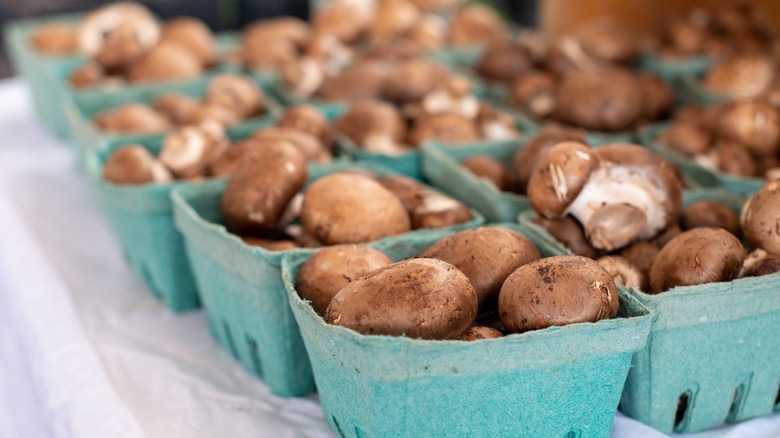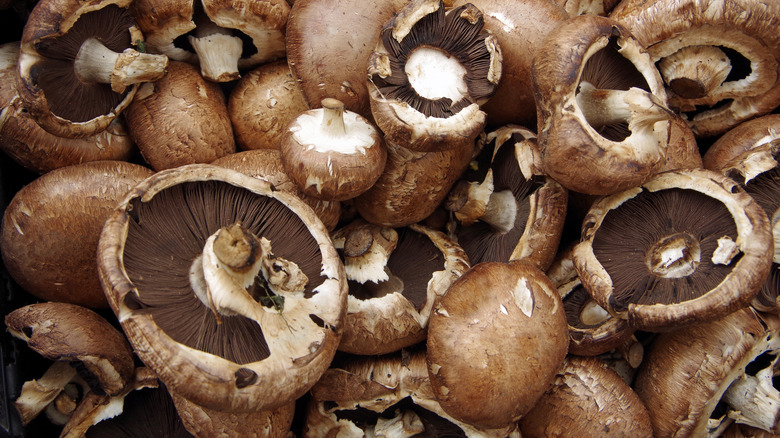The Age Difference Between Baby Button, Crimini And Portobello Mushrooms
If you're a cartoonist, animator, or children's book author racking your brain for a new pitch, here's a free idea: Anthropomorphic mushroom siblings Portobello, Crimini, and Baby Button navigate life as a modern family in the wild and wonderful world of fungi. It's undeniably cute, it plays into the enduring trend of fungi-centric cooking and cultivation, and it might counteract any lingering fear of zombifying cordyceps instilled by HBO's "The Last of Us." You're welcome!
Though they may look different in size and color, the three mushroom varieties are, in fact, siblings. That's to say they're all technically the same species of common mushroom, agaricus bispora, harvested at different stages of maturity. Baby buttons are the youngest and criminis are the second-youngest, which makes portobellos the oldest (and ostensibly the wisest) of the bunch. Still, just because they belong to the same family doesn't mean they're always interchangeable in a recipe. Here's how they differ, and the best ways the use them.
Don't call them triplets
It makes sense that portobello mushrooms are the most mature of the trio. Not only are they the largest and the deepest in color, but they also yield a deep flavor and a meaty texture that make them well-suited to lots of spices, plenty of butter, and ripping-hot temperatures, which is why you might see them listed on a menu as a "portobello steak." But unlike your human older sibling, portobellos are only three to seven days older than criminis.
Criminis — sometimes referred to as baby bella mushrooms — are about five inches smaller than portobellos in diameter, and they're also slightly lighter in color. They have a mild, earthy flavor that doesn't quite stack up to steak potential, but that doesn't mean you can't throw them on the grill. They're also great in mushroom stews and sautéed in butter with garlic and herbs.
White button mushrooms are even younger than criminis, with the miniature size, undeveloped color, and super-mild flavor to prove it. Toss them in a salad au natural, or sauté them with other vegetables in a stir-fry.
Mushroom marketing
French botanist Joseph Pitton de Tournefort is said to be the first to have discovered — or at least recorded — the agaricus bispora in France in 1707. His findings led to the species' commercial use in Europe and later led to its cultivation in the United States in the 20th century. However, Tournefort didn't come up with the now-common name of its most mature form.
According to Amy Farges, the author of "The Mushroom Lover's Mushroom Cookbook and Primer," the word "portobello," which is allegedly borrowed from an Italian town of the same name, was assigned to the meaty mushroom by Italian immigrants in Pennsylvania in the 1920s, who admired its likeness to a similar-looking brown mushroom that grows in Italy. Others, like the authors of the classic cookbook "The Food Lover's Companion," believe that the word arose in the 1980s as a way to add a little intrigue to the erstwhile unpopular mushroom.


